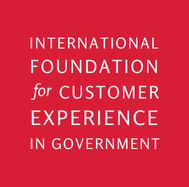This article is part of the 2025 Report: GovCX Trailblazers Case Studies, published by the International Foundation for Customer Experience in Government. The report aims to advance the global dialogue on Customer Experience (CX) in the public sector by highlighting innovative practices from around the world and setting benchmarks to help governments strengthen their CX initiatives.
Case Study: Building a Global Community of Practice for Human-Centric Transformation
Setal Morzaria, Associate Director of Digital Products and Services at the City of Vancouver put it simply: “One of the most meaningful impacts I’ve seen since launching the Global Community of Practice is a stronger sense of shared purpose.”
In early 2024, the City of Vancouver launched the Global Community of Practice with 23 founding members and a simple goal: to create a trusted space where public sector professionals could learn from one another, share practical tools, and navigate the real-world challenges of transformation together.
Just months later, the Community has grown to over 100 members spanning Canada, the United States, the United Kingdom, Estonia, Singapore, the United Arab Emirates and beyond, with practitioners representing digital, service design, CX, and innovation roles across every level of government. More than a network, it has become a living example of what human-centric reform can happen when people are given space to connect, learn from each other, and build change together.
What Sparked the Need?
Morzaria described the motivation behind the Community clearly: “The Community was created to fill a critical gap for public service practitioners, a global forum to explore customer, user, and employee experience, service design, digital innovation, and the real, day-to-day challenges of driving transformation in government.”
From the start, it was designed not as a top-down mandate but as a trusted space where practitioners could reflect, exchange insights, and grow together. The Community brought together public sector professionals facing similar challenges, offering not just tools and frameworks, but an honest space to ask better questions and learn from one another.
Even within the first six months, the impact became clear. “Practitioners are exchanging not just tools and frameworks, but candid reflections on what’s working, what isn’t, and how they’re adapting,” Setal noted. This openness fostered a space of real-time learning, not a collection of polished success stories, but a shared view into the actual work of transformation.
”The Community is not just a network; it brings to the table a shared commitment to public service, a drive for continuous improvement, and a recognition that lasting change requires collaboration across boundaries.
How It Works
From the beginning, the Community was intentionally designed to be inclusive and lightweight. Participation doesn’t require travel or formal reporting. Sessions are offered across time zones. Materials are shared asynchronously. Tools are accessible, adaptable, and easy to use.
This low-barrier, high-trust model has proven to be a strength. It allows members to engage meaningfully without adding to their already full plates. And it’s created the conditions for something rare in public service: honest, unpolished dialogue about what’s really happening: what’s working, what’s failing, and what still needs figuring out.
Even in its early months, the Community has enabled members to swap frameworks, test new ideas, and reflect openly on the assumptions baked into traditional government systems.
Changing Culture, Not Just Conversations
The Community is becoming a catalyst for embedding human-centricity as a core cultural value, not just a practice or methodology, but a mindset shift in how people think, collaborate, and deliver public services.
This isn’t about checking boxes, it’s about changing how work begins in the first place. That shift is being powered not by policy, but by peer-led learning. Practitioners are learning from one another’s constraints, starting small, testing ideas, and adjusting as they go. The Community helps foster better questions like, “Are we solving the right problem? Who’s excluded? What assumptions are we carrying?” These are the questions that build empathy and rigor at the same time.
If the Community’s momentum tells us anything, it’s that transformation doesn’t start with tools or policies, it starts with mindset and connection. That’s where its greatest strength lies: in shaping how people think, align, and grow.
”We’re seeing that change take root. Within Vancouver and beyond, teams are no longer treating journey mapping, inclusive engagement, and co-design as 'nice-to-haves.' They are starting to normalize these as integral to how they define and deliver value.
Driving Purpose and Capacity
When viewed through the lens of the International Model for Customer Experience in Government, the Community is having the greatest impact in the Direction and Development dimensions.
Direction: Practitioners are shifting from reactive problem-solving to more intentional, purpose-led work. The Community gives them space to reflect on what transformation really means, ask better questions, and align around shared values – not just deliverables.
Development: Capacity is being built through lived experience and peer exchange. There’s no waiting for formal training or permission. People are learning in motion, supported by a culture of openness and shared experimentation.
While Design and Delivery are emerging as more teams co-create resources or share approaches, the Community’s unique value today is building the mindset, confidence, and alignment needed to move forward from wherever people are starting.
The Lesson: Inclusion Is a Capability
One of the most powerful insights from this initiative? Inclusion isn’t just a value, it’s a capability. When we intentionally design for diverse voices, time zones, and levels of experience, we don’t just “include” more people. We unlock smarter collaboration, more resilient systems, and a deeper sense of shared ownership.
As the Community continues to grow, it stands as a model for what’s possible when public sector transformation is driven not by hierarchy, but by humility and humanity.

